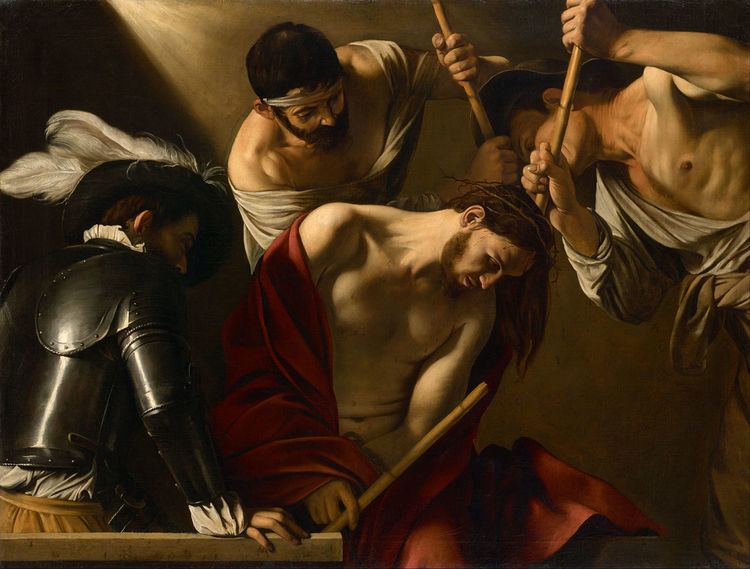Year c. 1602/1604 or 1607 Artist Caravaggio | Medium Oil on canvas Created 1607 | |
 | ||
Dimensions 127 cm × 165.5 cm (50 in × 65.2 in) Location Kunsthistorisches Museum, Vienna Similar Caravaggio artwork, Other artwork | ||
The Crowning with Thorns is a painting by the Italian painter Michelangelo Merisi da Caravaggio. Made probably in 1602/1604 or possibly around 1607, it is now located in the Kunsthistorisches Museum, Vienna.
Contents
History
According to Caravaggio's biographer Giovanni Bellori a Crowning with Thorns was made for Caravaggio's patron Vincenzo Giustiniani, and this painting can be traced convincingly to the Giustiniani collection. An attribution to Giustiniani would place it in the period before 1606, when Caravaggio fled Rome, but Peter Robb dates it to 1607, when the artist was in Naples.
Style
Caravaggio's patron Vincenzo Giustiniani was an intellectual as well as a collector, and late in life he wrote a paper about art in which he identified twelve grades of accomplishment. In the highest class he named just two artists, Caravaggio and Annibale Carracci, as those capable of combining realism and style in the most accomplished manner. This Crowning with Thorns illustrates what Giustiniani meant: the cruelty of the two torturers hammering home the thorns is depicted as acutely observed reality, as is the bored slouch of the official leaning on the rail as he oversees the death of God; meanwhile Christ is suffering real pain with patient endurance; all depicted within a classical composition of contrasting and intersecting horizontals and diagonals.
The theme of pain and sadism is central to the work. John Gash points to the way the two torturers ram the crown down with the butts of their staffs, "a rhythmic and sadistic hammering." Robb mentions that the painting is about "how ... to give pain and feel pain, and how close pain and pleasure sometimes were, how voluptuous suffering could be on a golden afternoon."
